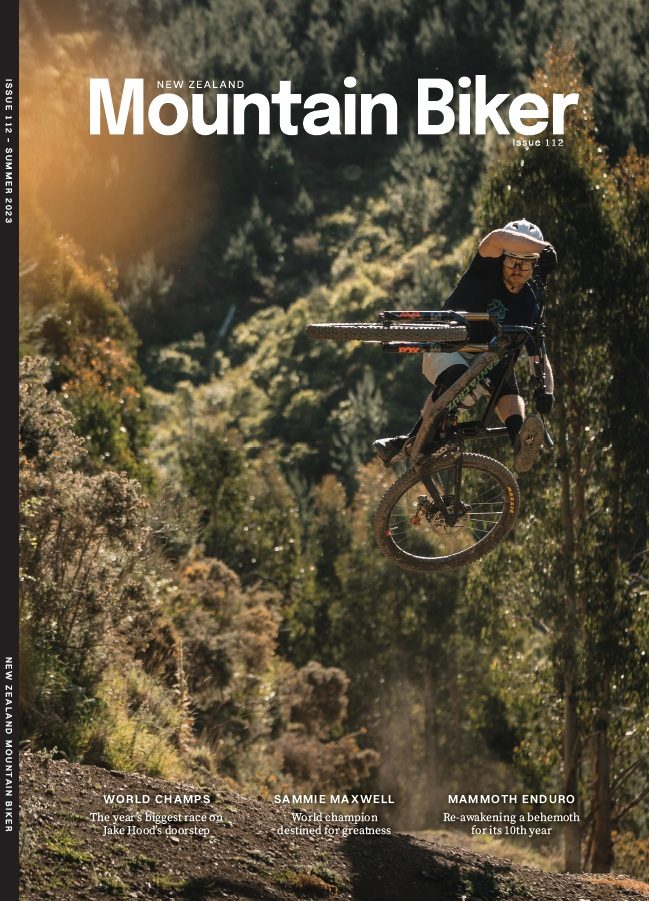Words Alex Stevens
Images Cameron Mackenzie
Imagine this: you are riding down the road at 32km an hour on your eBike, en route to the trails and, suddenly, a car pulls out in front of you. It’s one of those moments when time slows down, and split-second reaction times are the difference between disaster or a close call. You grab a handful of front brakes to try to stop in time, only to end up going over the bars or sliding across the bonnet. Sounds nasty, right?
So, when your mate goes; “Pedal full gas down the road, grab all the front brake you can to try and send yourself over the bars….” you’d agree that sounds like a silly idea. Still, here we are, sprinting down the road full speed, pulling the front brakes on at full power and expecting to do a front flip. But, instead of finding myself laying in the middle of the road wondering why I agreed to such a stupid idea, I came to a stop safely, still fully clipped in and upright. The Bosch eBike ABS system has kicked in.
While we’re used to finding electronic braking control on cars and motorcycles, on an eBike it is a little more unique. This innovative technology has now started gaining traction in the eBike industry and we’re seeing some exciting progression as brands like Magura and Tektro team up with Bosch to equip their powerful 4-piston brakes with the ABS system, to ensure you’ll come to a stop safely.
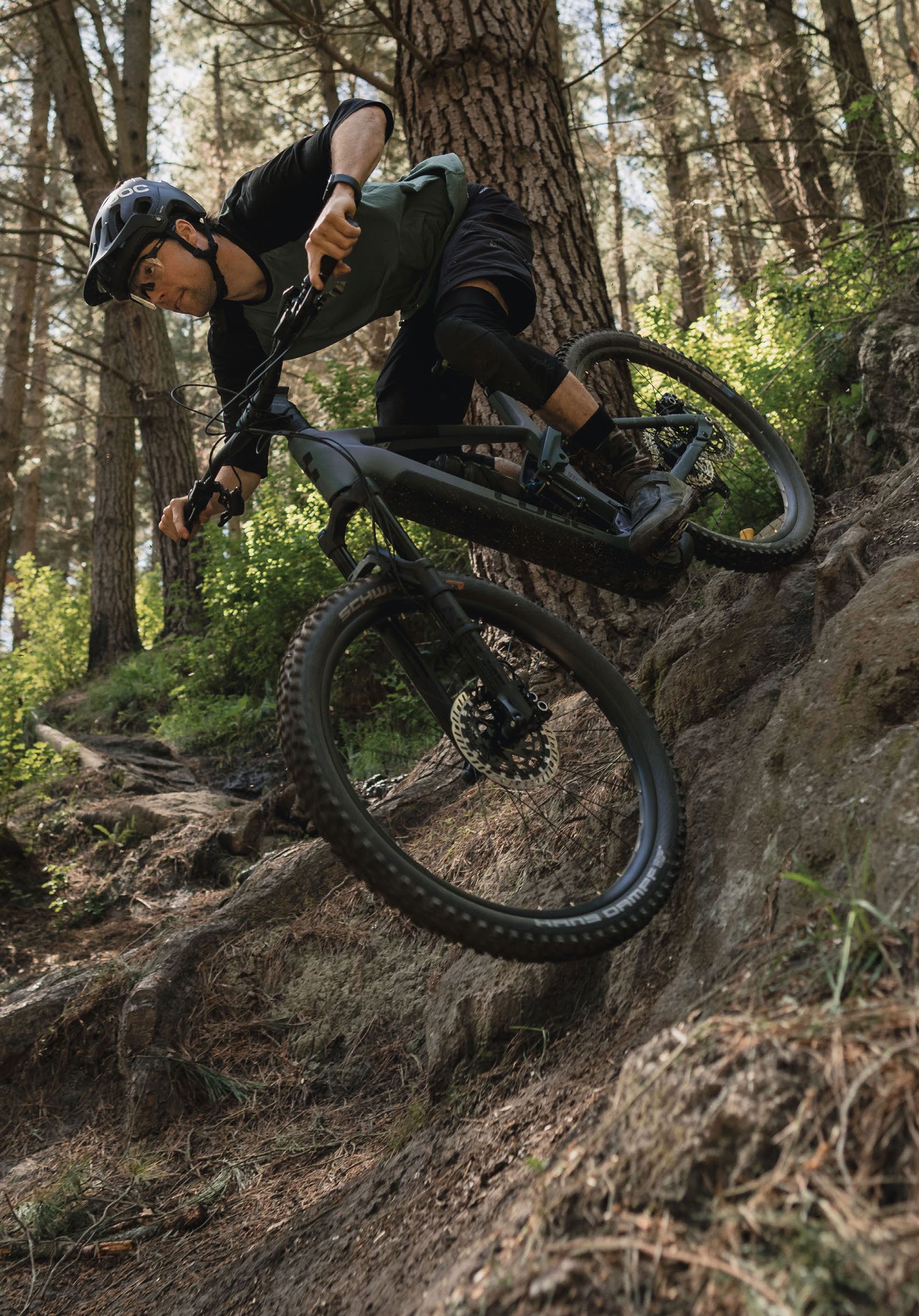
It blew my mind that the ABS system does everything possible to keep you tyre side down and to reduce the likelihood of going over the bars no matter how hard you try slamming on the front brake at 32km an hour.
Bosch’s ABS technology is finding its way onto the eMTB models of many brands, not solely featuring on road and commuter bikes. The arrival of ABS on mountain bikes is where I was most intrigued to see how it would stand up to a variety of trail conditions, and to find out how much of a difference this new style of braking provided. Could this be a whole new world? eBikes have already opened up so many possibilities within mountain biking and I wanted to see what this new innovation was all about.
I got the opportunity to test out the Cube Stereo Hybrid 140 ABS and I’d have to say it made for a fun ride with a lot of learning. Riding this bike across a wide range of trails in Christchurch, from the Port Hills out at Godley Head to the steep descents at the Christchurch Adventure Park, I gave the ABS system a thorough test, throwing every type of terrain I ride regularly at it. Even on the tight, twisty, steep turns of SMC and Pork & Pūhā, at the Christchurch Adventure Park, the braking was 100% in control all the time, and not once did I feel like I was going to go over the bars.
So how does this all work? What’s impressive about this technology? Speaking to the bike nerds and naysayers, it’s all about brake modulation – the ability to precisely and accurately control the amount of clamping force on a disc with a given amount of pedal input. That is not easy to pull off with a 25kg eBike. These things just love to pick up speed and slowing them down whilst keeping in control can be tricky.
The Bosch anti-lock brake system works a treat. It prevents the front wheel from locking and the back wheel from lifting, essentially allowing the rider to avoid skidding when grabbing too much – or not enough – brake. It is an odd feeling at first, having this additional reassurance to get used to and, because of this, the way you normally brake on a mountain bike is adapted ever-so-subtly. The system is run by a sensor on the inside of the lower fork, which is powered by the battery. Magura has 203mm rotors with sensors that measure the rotational speed of both wheels to ensure you can use both brakes simultaneously and confidently.
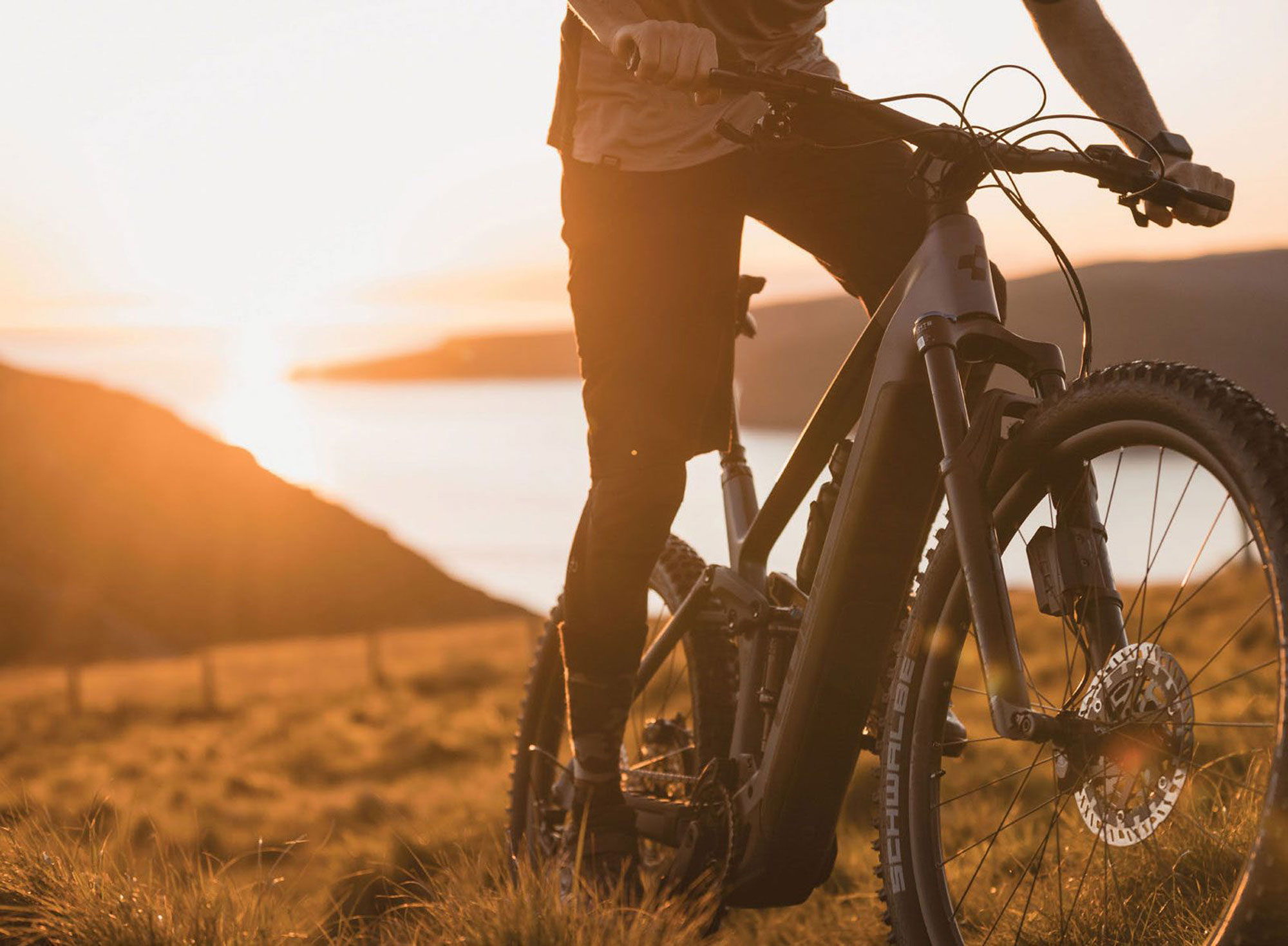
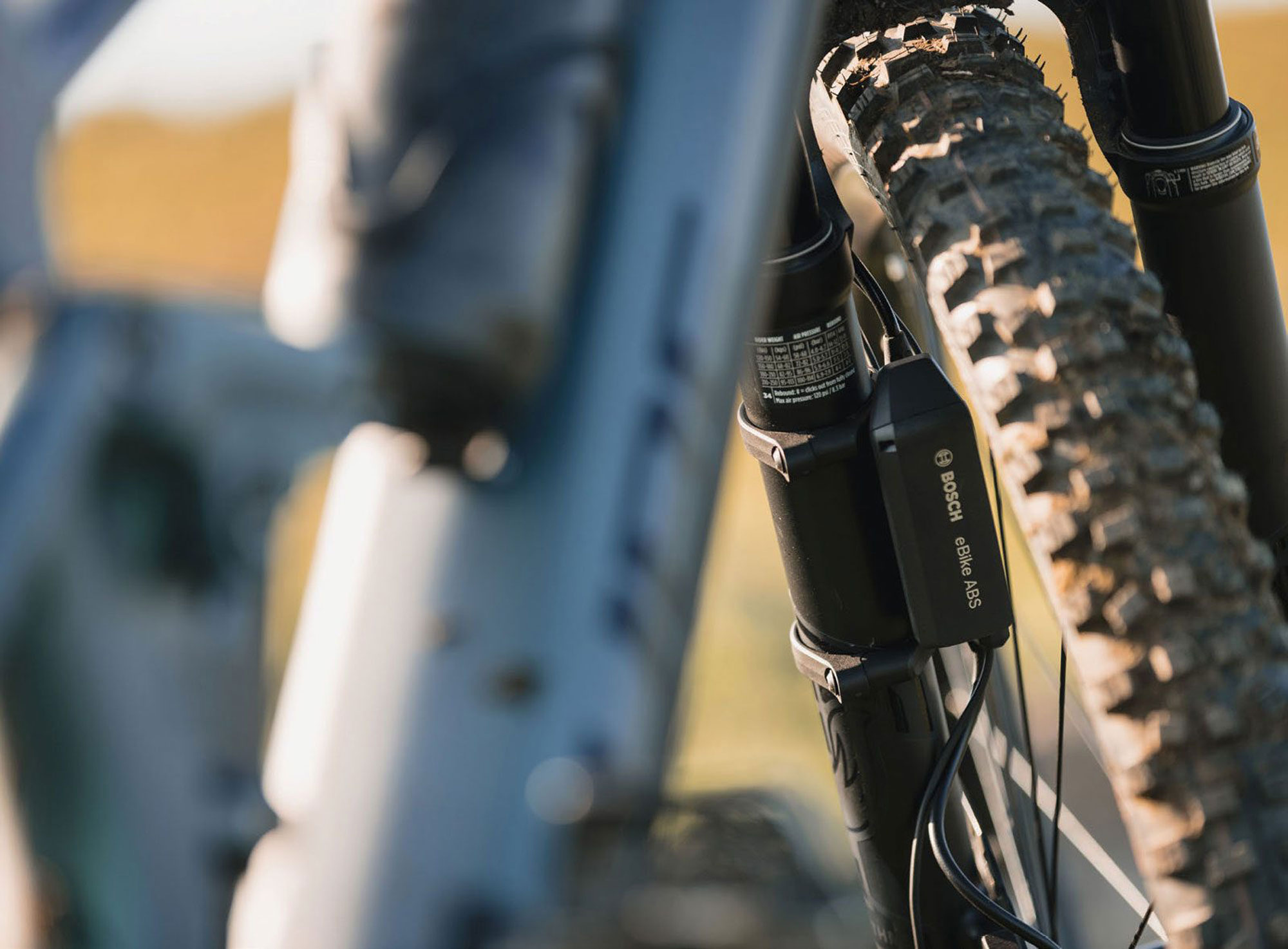
The Cube Stereo Hybrid 140’s I rode had a solid build kit with a mixture of in-house components and the “workhorse” parts. Motor and battery, of course, are taken care of by Bosch eBike Systems with the Performance Line CX motor and a 750Wh battery. Fox suspension with a 34 Rhythm and a Fox DPS Performance rear shock keep the bike planted whilst soaking up all the big hits. The bike’s geometry is nothing radical; it’s certainly a capable trail bike. In terms of numbers, the size XL I was testing, runs: reach 497mm, head angle 66mm, seat angle 75.5mm and wheelbase 1283 mm. Long story short, this bike is super stable at high speeds and can handle all the types of trails you’ll be riding it.
Another interesting thing I found was the cockpit reach levels were a little bit different to accommodate the ABS system. The Magura levers weren’t the normal ones found on their mountain bike brakes. Rather than something like an MT7, they were long straight-type lever blades that didn’t offer much reach adjustment. The Shimano shifter had this super weird matchmaker system which made it sit really far down so that changing gears was tricky since I don’t have the biggest hands. These are pretty minor issues and easily fixed so aside from those the rest of the build kit is spot on and top value for money.
It was my first time riding the Bosch system and I enjoyed the clean display screen, smooth and consistent power output and different modes of power assist. eMTB mode gives you the perfect level of power assistance and the bike doesn’t feel like it’s going to run away from you. It even tells you when to change down gears to ensure you aren’t over-torquing the drivetrain if your cadence is too low. And you’re not going to run out of power on your all-day ride with the massive 750-watt battery. Laps on laps, what more could you want? Range anxiety is non-existent here.
Riding the Cube was confidence inspiring. It blew my mind that the ABS system does everything possible to keep you tyre-side down and to reduce the likelihood of going over the bars, no matter how hard you try slamming on the front brake at 32kmph. The addition of ABS means it’s not just your average eBike but, once you’ve got your head around its nuances, it becomes just like riding any other mountain bike with the one caveat: exceptional braking performance. Doing nose wheel pivot turns is impossible with ABS but if you’re not into riding tight, janky tech trails then this bike is right up your alley.
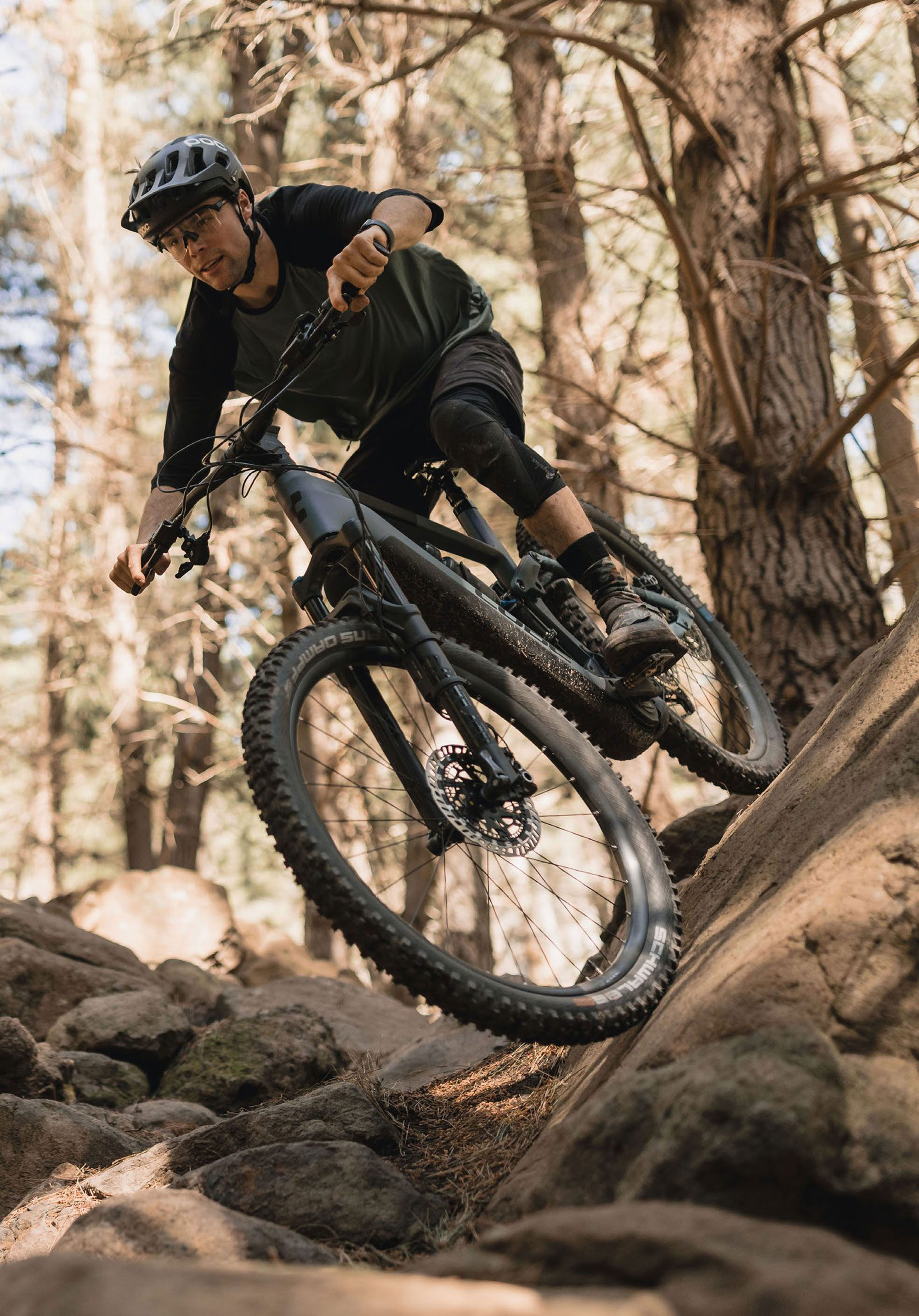
Does ABS belong on mountain bikes? I’d argue yes. If you’re a full-on enduro racer I’d say the benefits are there but only incremental gains. Generally racers have a clear understanding of braking and often years of fingertip control and intuition that has been developed. But, if you’re a casual trail rider who lives for riding their bike as much as they possibly can, and wants to tackle more challenging trails with reassurance, then this technology is for you. It can provide that extra confidence boost that can see you navigate your way through to the bottom of trails you would otherwise not consider, providing a safe pathway to up-skill. It also makes sense for the adventurous riders heading into remote backcountry trails. It is an additional ‘insurance policy’, not to be used to push beyond your limits but about having an added layer of safety to mitigate some of the risks that we all take riding.
Just like the growth of eBikes now representing a huge portion of the bikes we all ride and see on the trails daily; ABS will become a compelling addition to making the ride experience better. I can see that it will help make for more confident and safe riders that will hopefully keep the ACC stats down and backcountry heli-vacs reduced. It will be exciting to see more bikes come to market with this feature in the coming years.
Next time you grab a full handful of front brakes and go over the bars on a steep descent, or lose some confidence with your braking whilst riding and having a near miss, the thought of ABS reassurance may just creep into your mind.
